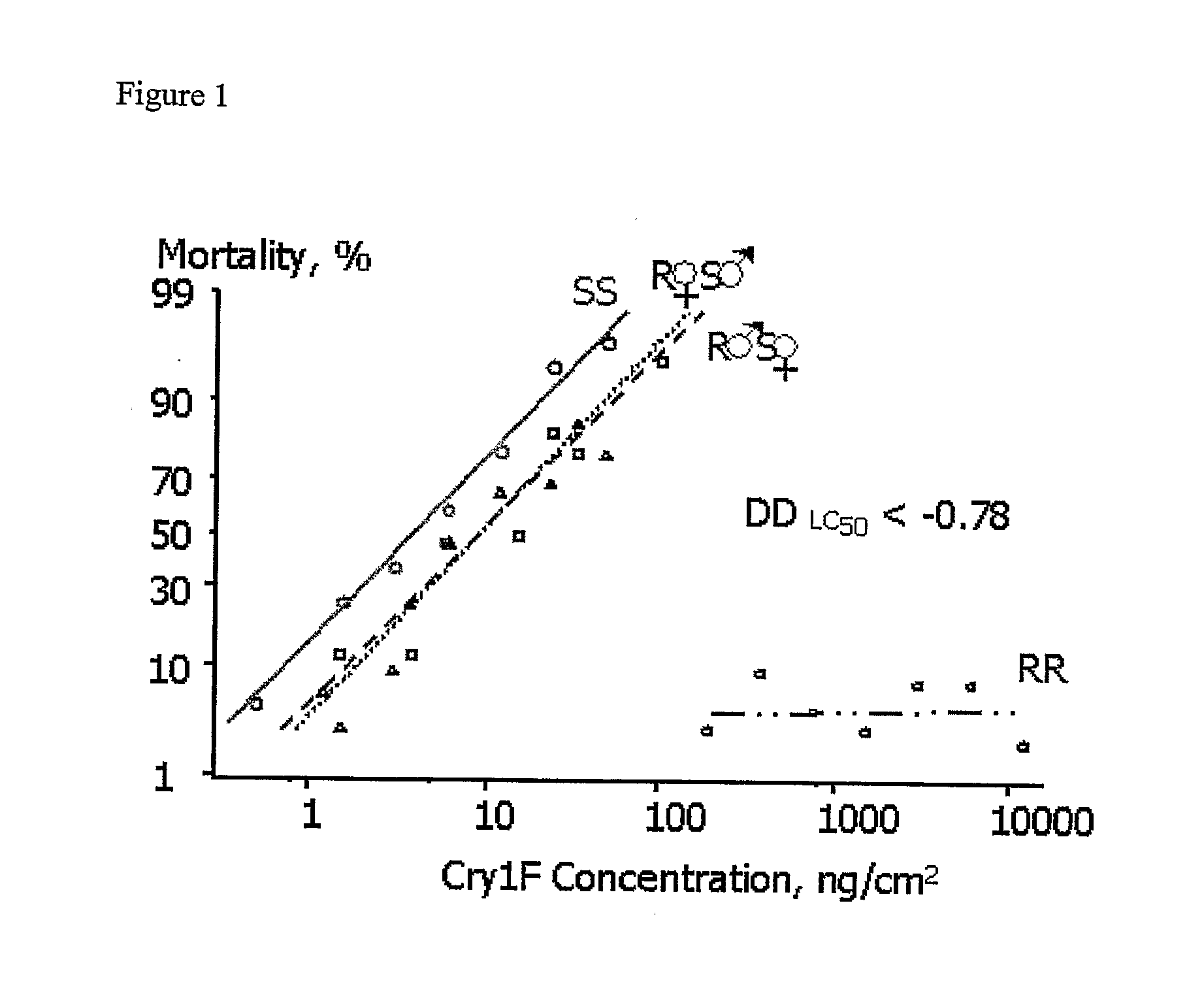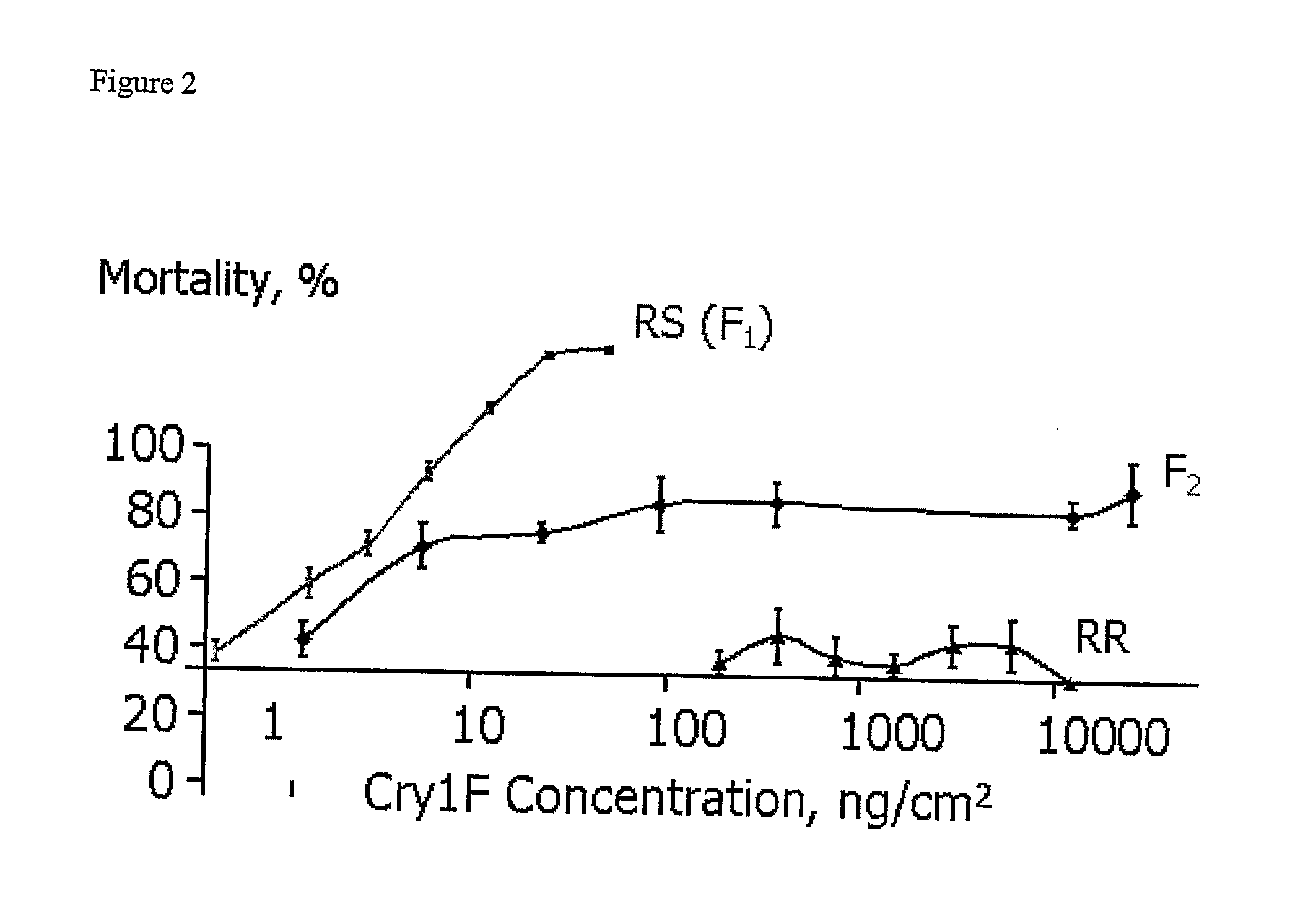Method of Reducing Insect Resistant Pests in Transgenic Crops
a technology of insect resistance and transgenic crops, applied in the field of pest control, can solve the problems of increasing potential yield loss, soil damage, and considerable damage to maize crops
- Summary
- Abstract
- Description
- Claims
- Application Information
AI Technical Summary
Benefits of technology
Problems solved by technology
Method used
Image
Examples
Embodiment Construction
[0035]As used herein, the term “corn” means Zea mays or maize and includes all plant varieties that can be bred with corn, including wild maize species.
[0036]As used herein, the term “comprising” means “including but not limited to”.
[0037]As used herein, the terms “pest”, “pesticide”, and “pesticidal” are meant to be interchangeable and inclusive of the following terms: for example, insect, insecticide, and insecticidal when referring to an insect pest; or with the terms, for example, nematode, nematicide, and nematicidal when referring to a nematode pest; or with acaric, acaricide, and acaricidal when referring to an acaric pest; or with fungus or fungal, fungicide, and fungicidal or equivalent terms such as mycotic, and mycocidal when referring to fungal or related pests; or with plant or herb, planticide or herbicide, or planticidal or herbicidal when referring to a plant or a herb pest.
[0038]As used herein, the term “transgenic refuge” refers to the requirement of a resistance m...
PUM
| Property | Measurement | Unit |
|---|---|---|
| Fraction | aaaaa | aaaaa |
| Fraction | aaaaa | aaaaa |
| Current | aaaaa | aaaaa |
Abstract
Description
Claims
Application Information
 Login to View More
Login to View More - R&D
- Intellectual Property
- Life Sciences
- Materials
- Tech Scout
- Unparalleled Data Quality
- Higher Quality Content
- 60% Fewer Hallucinations
Browse by: Latest US Patents, China's latest patents, Technical Efficacy Thesaurus, Application Domain, Technology Topic, Popular Technical Reports.
© 2025 PatSnap. All rights reserved.Legal|Privacy policy|Modern Slavery Act Transparency Statement|Sitemap|About US| Contact US: help@patsnap.com


